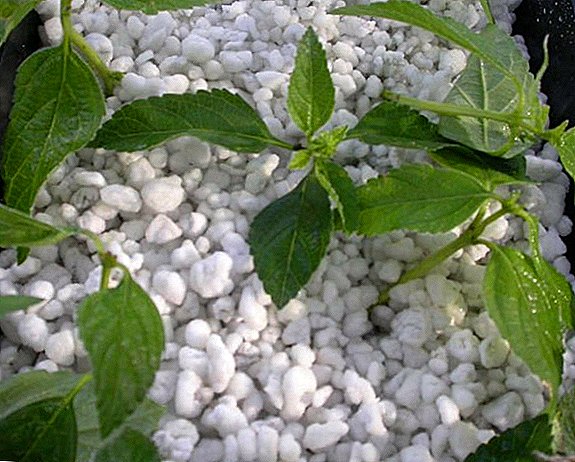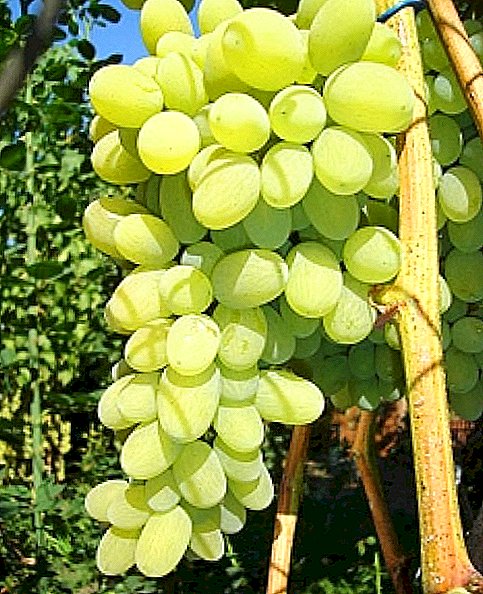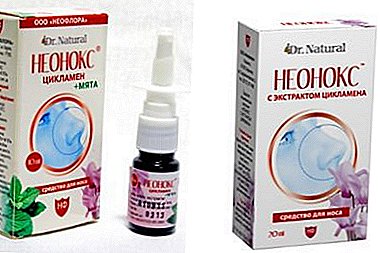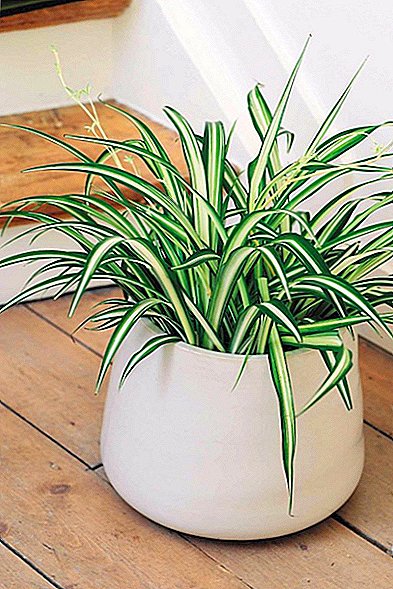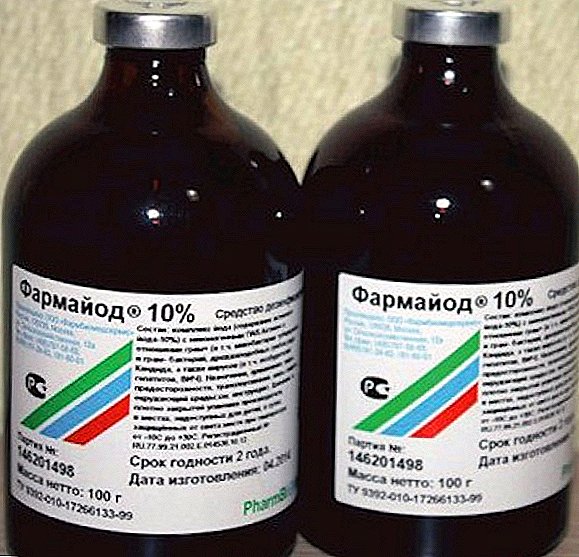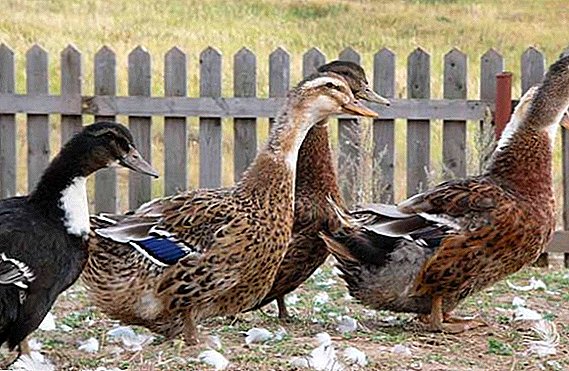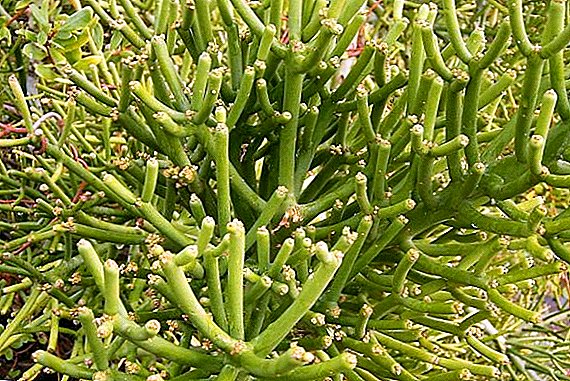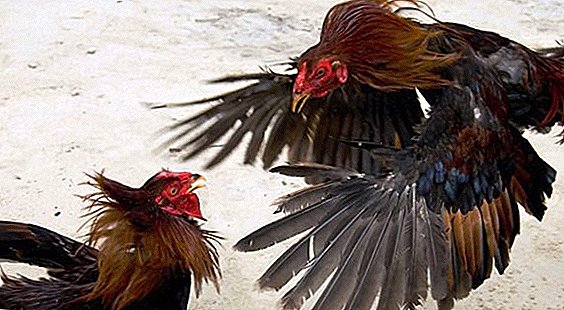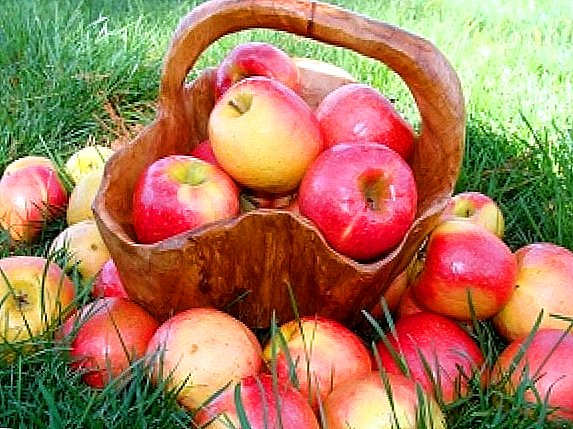
I would like to find something more traditional and familiar than an apple tree in the garden, but this is hardly possible! And even if so, does it mean that we know a lot about them?
Mm, maybe someone really knows a lot, but it is unlikely that most of our readers can, without additional efforts, sort out the diversity of apple trees represented in our homeland.
I'm sorry, what? Ah, baked apples, apples, and apples, with dew drops, just plucked from the branch?
Alas, wrong, friends! Starting from the time when they give us their crops, apple varieties can be divided into autumn, winter and summer. Consider this separation in more detail.
Summer apple varieties
Papirovka (White filling)
Description: well-known traditional variety. These apples ripen in early summer. Mostly, paping is grown in gardening farms located not far from cities, in country houses. The apple trees themselves are average in height, at the beginning of the growth of the crown in their form of a wide pyramid, then the shape changes to oval.
This variety has an average thickness, strongly pubescent shoots. Their color (shoots) can be called brown-olive. White lentils scattered wide, have a long form. The leaves are dull, their size is rather medium, the color is gray-green, the shape is ovoid, the bottom is heavily pubescent.
Flowers are rather large, saucer-shaped, bordered with white petals, pink-colored buds. The petals are oblong, they have raised, closed edges.

Apples grow medium-sized, round-conical in shape, often with noticeable ribs. The large ripe fruits of this tree have a triangular appearance. The apples are painted greenish-yellow, without a red barrel. Ripe ones have a white patina.
The peel is thin, not rough, delicate. The fruit stem, average on length, is located in a small funnel. The flesh of the Papation is tender, juicy enough, loose, white in color, has a sweet-sour taste. Overripe, the flesh of the apples becomes dull.
Apples ripen early enough - at the very beginning of August they are ready to eat. They (apples) have an increased tendency to damage and low transportability. To please us with harvest Papirovka can be 4-5 years after planting.
The advantages of varieties recognized: early ripening of fruits, and the rapid onset of the opportunity to bear fruit. Among the disadvantages are the low level of transportability, the absence of a darker coloring of apples, and the alternation of periods of fruiting. Melba
Melba
Description: trees of this variety are medium tall and have a rounded crown. The bark of the branches has a brownish-orange color. The average thickness of the shoots are not very pubescent. The leaves are oblong, slightly curved and oval. Large flowers bloom from white and pink buds. Petals are rounded, light pink in color.
Fruits are medium, have a slightly flattened, rounded-conical shape and weakly pronounced ribs. The gentle and smooth peel has an easy wax raid. The color of the fruits of Melba is light greenish, with a red blush.

Medium stem, deep funnel. Delicate snow-white flesh has a strong candy flavor, sweet-sour taste and quite juicy. Trees begin to bear fruit no sooner than 4 years after planting (and even that, and after 5 years), subject to good care.
Melba's pros It is possible to name high precocity, good quality of fruits and sufficient productivity. In addition to all of the above, compared with other summer varieties, Melba tolerates transportation well. Varieties of varieties: susceptibility to scab, not very good winter hardiness, occasional fruiting.
Quinty
Description: tree crown wide, sparse and sprawling. The main branches are curved, the bark is greenish gray in color. Fruits appear from kolchatok. The leaves are dark green in color, large, have a wide oval shape, less often ovoid. The edges of the sheet without irregularities. The flowers are large or medium, white.
The fruits grow medium, but if the harvest is poor, the apples ripen larger. The shape of the fruit is round, elongated-conical. Fruit color is predominantly greenish-yellow, often with a red or orange-red blush.

When harvesting, the flesh has a greenish tint, but when it reaches maturity it takes on a creamy color. The taste of apples - sweet and sour, juiciness - sufficient. Fallen fruits cannot lie for a long time - they are stored for about 10 days. Fruiting trees begin relatively early and give a good yield - in the region of 100-120 kg.
Advantages of the Quinty variety: early ripening of fruits, the rapid entry into the age of fruiting, resistance to drought, heat, powdery mildew. The disadvantages are: low winter hardiness on the territory of the middle lane, susceptibility of scab, poor transportability of fruits and a short shelf life.
It is also interesting to read about the early varieties of apples.
Autumn apple varieties
Antonovka
Description: the tree grows high enough, the crown has a high-spherical, which gradually acquires a spherical shape. Fruiting comes with ringworms, which in large quantities dot the branches. Leaves are bright green in color, have an oblong ovoid shape and a serrate edge. Large white flowers are saucer-shaped, petals are slightly oblong, adjoining each other.
Fruits are medium in size, mostly the same shape. The peel is usually smooth, the color is greenish-yellow, then gradually becomes yellow. Blush or absent, or mild. The skin in the funnel can be rusty. The flesh is yellowish, has a sweet-sour taste, juicy. The aroma of ripe fruit is unusual, incomparable.

The term of removal of the fruit, most often, is mid-September. Antonovka apples can be stored for about 90 days. Fruiting begins after 7-8 years after budding, and a full crop can be obtained in another 1-2 years. Initially, the harvest is regular, then it becomes periodic. Winter hardiness of Antonovka is rather high, also the variety is distinguished by low susceptibility of diseases.
Advantages of Antonovka: good yield, high level of ecological adaptability, the possibility of application in various fields. Disadvantages can be considered: a short shelf life of apples, the irregularity of fruiting.
Spartacus
Description: Sredneroslye trees have a thick broad crown. High ability to spawn. Fruiting is possible on all fruit formations. Brilliant, straight shoots have a brown-red color and medium pubescence. The leaves are oblong-oval in shape, have a crumpled appearance.
Fruits of medium size, approximately 100-130 g., Are flat-rounded or round. The peel is medium thick, with a smooth surface, shiny. The color is yellowish, gradually turning into a bright red color. The flesh has a sweet and sour taste, cream color, tender.

The fruits are removed by the end of August - early September. The most favorable time for use: the second half of September - mid-November.
Disadvantages: By the end of the period of use there is a decrease in taste. Active fruiting begins with 3-4 years after planting. Among the advantages of the variety is good winter hardiness, scab immunity, precociousness.
Mac
Description of the variety: mixed type of fruiting, sparse crown, shirokoraskidisty. Trees are average. The leaves have a broadly ovoid shape, a light green color with a slight yellowish tinge, slightly pubescent, the edge of the leaf is slightly toothed.
The fruits of Macintosh are medium and above medium in size, the shape is flattened, slightly conical. The color of Macintosh fruit is greenish or whitish-yellow. Peel has a wax coating. The flesh is predominantly white, delicate, quite juicy, has a sweet-sour taste and a candy flavor.
They remove apples of this variety usually in the second half of September, and are ready for use in 3 weeks. In a cool room, the harvest can be preserved until February. Young trees begin to yield only after 6-7 years. Annual yield.

The advantages of the Macintosh fruit are: pleasant taste, good transportability and the ability of fruits to store. Disadvantages: low winter hardiness, high susceptibility to diseases and scab.
Also interesting to read about autumn varieties of apples
Winter apple varieties
Pepin Chavrany
Description: Pepin Chevrana trees grow of medium size, with a wide-round crown, which requires constant thinning. The place of formation of the crop are growth shoots. Small leaves have an oval shape and an elongated sharp tip with a matte surface.

Fruits grow medium and small. The shape is round-conical, there is a slight ribbing. Color greenish-yellow with dark red blush. The flesh is juicy, dense, has a wine-sweet taste and a spicy delicate aroma.
Pros: fruits ripen in winter and have a high transportable ability. In cool rooms, the harvest can be stored for up to 220 days. Pepin Chavranny begins to bear fruit for 5-7 years. Crops ripen every year. Positive sides of Pepin Chavran - regular abundant harvests, good regeneration ability, transportability.
Minuses: shredding fruits without additional pruning, tendency to shattering and susceptibility of scab.
Golden delishes
Description: Golden Delicious: the tree is average, initially has a cone-shaped crown, which with the onset of fruiting takes on a wide circular shape with dense branches, over the years, significantly sagging under the weight of the crops. Fruiting has a mixed type. The shoots are medium thick and slightly curved. The branches are densely dotted with large lentils.
The leaves are broadly oval, have a rounded base and a small elongated tip. Leaf color is green, the surface is shiny and smooth. Leaves grow on long petioles. The flowers are medium in size, saucer-shaped, white in color with a slight pink tinge.

Fruits are usually medium, sometimes large. Apples have a rounded conical appearance, the skin is dry, rough and dense. The skin color is golden green and yellow in a more ripe state. The flesh of only the removed fruits is dense, quite juicy, has a sweet taste and slightly greenish, and after lying down it becomes creamy, becomes softer.
The crop is usually harvested at the end of September, and it can be stored until mid-spring. Fruiting begins in the second or third year and is regular, with good care conditions. The variety tolerates winter well, but it is capricious in drought conditions.
Advantages of Golden Delicious: high quality of fruits, early and high fruiting, resistance to scab. The variety is actively used for breeding. Disadvantages - the possible periodicity of crops, the tendency to defeat with powdery mildew and wilt during storage.
General recommendations for the care and planting of apple trees
Time to land These trees can be chosen both in spring and in autumn. For this, it is best to choose a well-lit place, as the apple trees are light-requiring. When planting a young tree, it should be remembered that places in the lowlands and with close groundwater storage are not suitable for our purpose.
Also, acidic and alkaline soils will not work, and the apple trees will best of all feel on gray forest, chernozem and sod podzolic soils.
A month before planting an apple you need to prepare a planting hole, add organic fertilizers to the soil. Landing pit should be such that the root system does not feel cramped. Fill the ground carefully so as not to damage the roots.

Root neck The trees should peek out from the ground for 4-5 cm. It is best to ram the earth with your hands to ensure good contact of the roots with the soil. After planting, 3-4 buckets of water should be poured under the seedling.
For planting most often choose 2-year-old seedlings, whose height is 60-70 cm, they have at least three 50-centimeter shoots. But, oddly enough, it is better to get accustomed annual seedlings that need to be booked immediately after planting, if planted in the spring, or the next spring, after the autumn planting.
If the root system is damaged, it should be cut and leave only healthy tissue. In order to avoid drying of the roots, they should be dipped in an earthen mash mixed with clay and mullein.
In the center of the pit set the peg, which will ensure the stability of the seedling. The bottom is covered with a mixture of humus, superphosphate and potassium sulfate. After watering, the land around the seedling is mulched with humus and sawdust.
Trimming is carried out with the aim of thinning the crown. For weakly branching trees, shortening is carried out. Every year, gardeners conduct detailed pruning to support growth processes.
Anti-aging pruning hold, if there is a decrease in annual growth of 30-40 cm. Pruning are subjected to long branches, but care must be taken that the upper branches are not longer than the lower ones. The branches that grow inside the crown are also subject to thinning during rejuvenation.
First defense held before the start of sap flow. Spraying is carried out with a mixture of seven hundred grams of urea and ten liters of water, but you need to be careful and do this procedure until the kidneys appear, in order to avoid burns. To neutralize the migratory pests, once a month use biological preparations for spraying.
To increase the protective properties for diseases and for less susceptibility of weather conditions, apple trees should be sprayed with Ecoberin or Zircon. In order to avoid the spread of scab, apple trees should be sprayed with fungicides. The greatest attention should be paid to diseases of the cortex, because they can cause irreparable harm.


